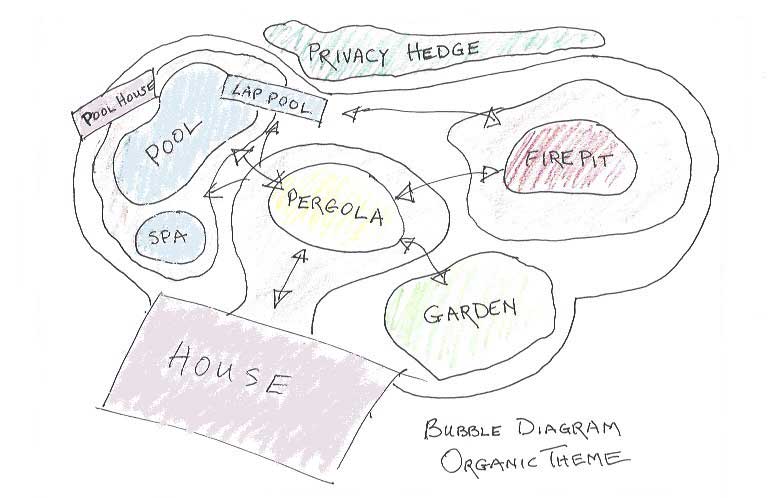What Shape Means When Planning a WaterSpace
Visualizing with Shapes in Three Dimensions is Harder than You May Think
Shape can be a hard thing to get your arms around, but it’s worth taking a moment to look closer before diving into how you’ll shape your perfect WaterSpace.
Try this experiment: Recall your first encounter with the way objects flatten into two dimensions when looking out an airplane window at 30,000 feet. Or go now and look at your house on Google Earth. You might recognize a few outlines from high overhead, but those flat shapes sure don’t look anything like what you’d see on the ground. Yet flat shapes are what we start with when putting your design on paper.
Artists solved the problem of representing the third dimension on a flat surface by using geometry to create perspective, giving viewers the appearance of depth on a flat canvas. Architects provide a heavier line in their overhead plans to indicate height, so that builders know to consult another set of plans for more detail.
When it comes to pools and shape, people naturally think it’s all about the pool shape. For all practical purposes, that’s just two dimensions unless you happen to be swimming under the water. The basic pool presents itself as a flat surface with a geometric shape: rectangle, kidney, a more complicated rectilinear shape, or a free-form organic shape.
But a pool doesn’t sit by itself in a flat environment. The shape forming the entire pool area is really the shape you want to focus on. You want to organize the entire landscape—including the house—into a combination of uses, shapes and views.
All of these shapes are going to naturally involve that third dimension missing from the pool shape: height. Landscape designers distinguish between shape, the two dimensional, top-down view we’ve discussed, and form, the three-dimensional ground view. It’s that ground view where the magic happens.
The action starts with a simple bubble diagram like the one accompanying this article. These sketches may look flat, but to the designer they represent the formation of a vision in three dimensions. In the illustration shown here, the journey (and the view) from the house doesn’t take you straight to the pool but to an inviting pergola.
Like an outdoor living room or dining room, you can relax at the pergola or go on to a fire pit feature on the right or the pool to the left. The path between the pit and pool invites visits in either direction.
The overall theme of this simple bubble diagram is organic. The pool could be any shape that suits the needs of its users, For lap swimmers, for example, a part of the pool needs to lend itself to a swimming lane. For families with children, a water slide is in high demand. And just about everyone enjoys seeing moving water and hearing the sounds of falling water.
Let’s return now to Google Earth: Search on Longwood Gardens and see how much you can discern from far above. If you’re a frequent visitor—like me—you’ll make out some of the major features but others will be hard to see, if visible at all. Then, if you get a chance go to Longwood, take in all its variations in height and three-dimensional shapes. Experience how you’re drawn along a path and have to choose among different journeys. Note how different spaces—even fairly small ones—often come with different themes, like the small desert garden that precedes long rows of brilliant temperate-climate flower gardens.
This contrast of theme and size can fit anywhere. You don’t have to be a DuPont—or even have an estate—to shape special spaces and journeys for your home. I’ve seen a small townhouse backyard, for example, transformed by Philadelphia Landscape Architect Chuck Hess into a memorable WaterSpace.
Your journey can start with a simple two-dimensional bubble design. The key is developing the vision to see those shapes in your mind like you’ll experience them on the ground.

A WaterSpace Bubble Design: Your first step is to visualize where your major features go and how they fit together. The bubbles in these quick drawings don’t represent actual sizes and shapes but help you organize the space.

